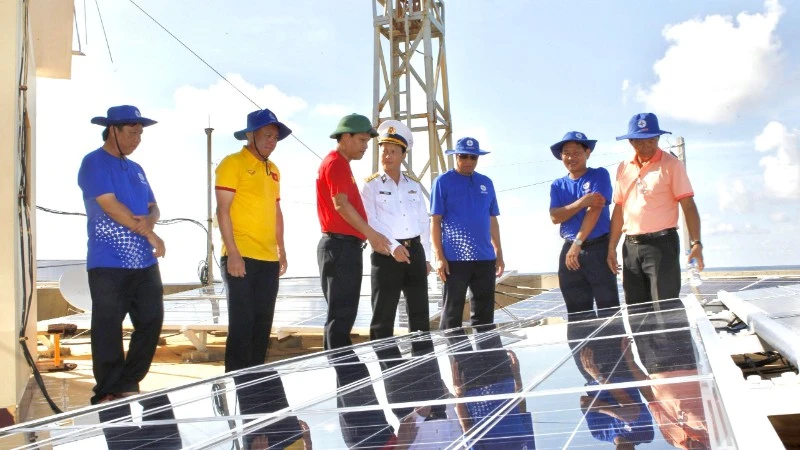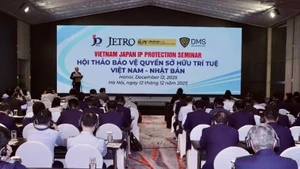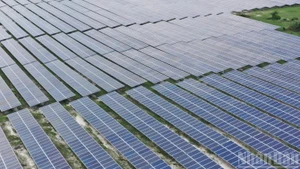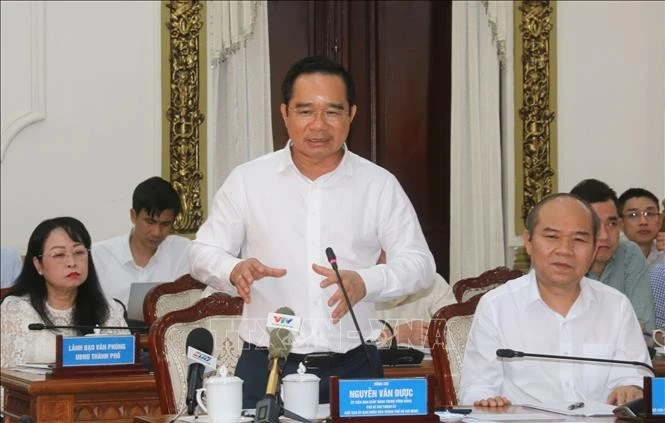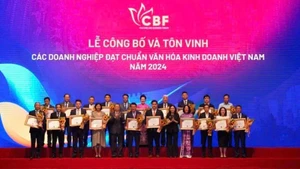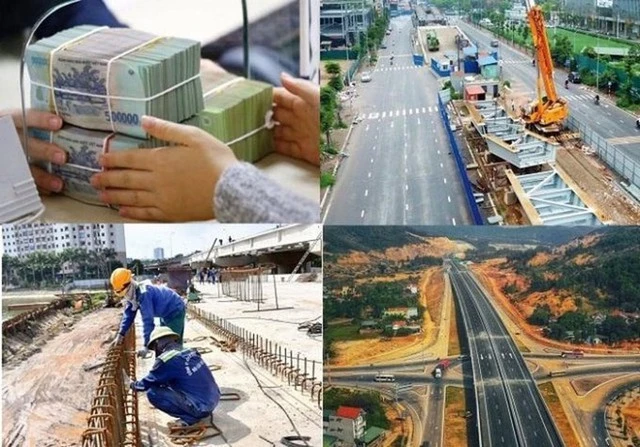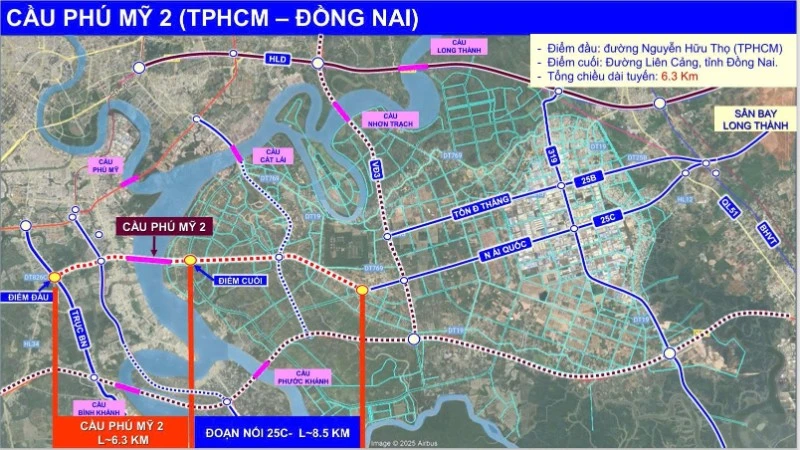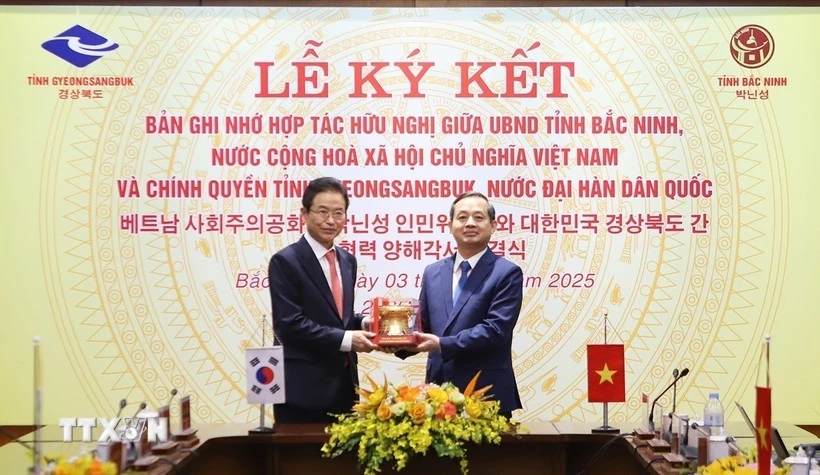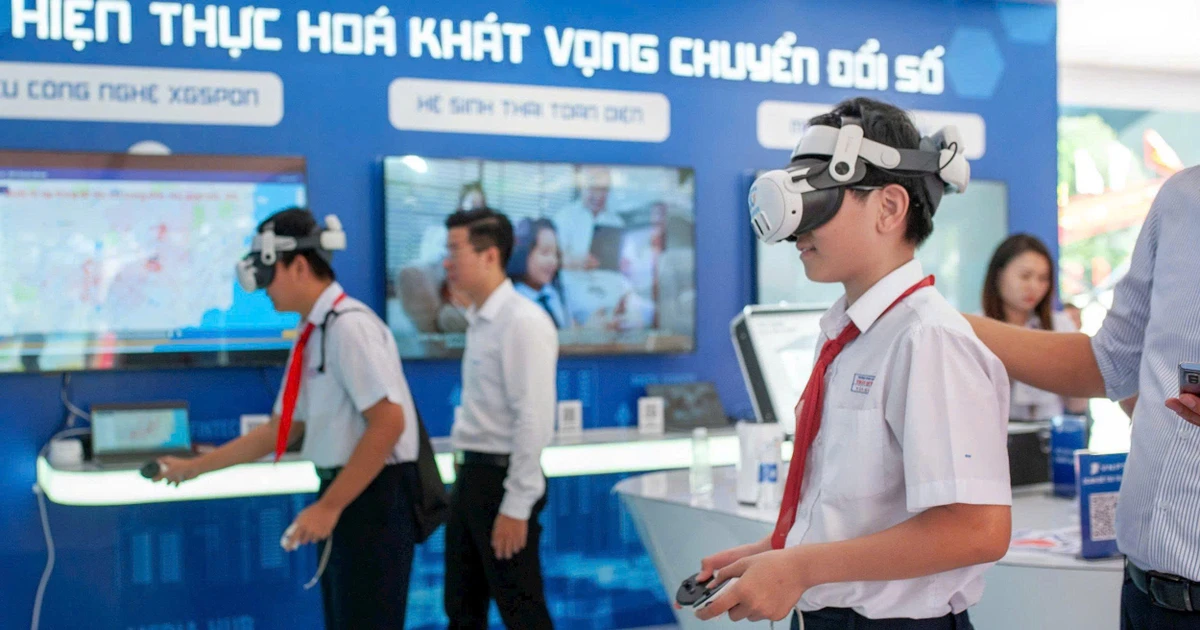This objective not only helps ease pressure on electricity supply and reduce costs but also contributes to cutting greenhouse gas emissions and ensuring national energy security.
Effective energy-saving initiatives
Surveys indicate that there remains vast potential for energy saving across production and business sectors. The industrial sector, which accounts for over 50% of total energy consumption, could achieve savings of 20–30%.
Currently, Viet Nam has more than 3,000 facilities consuming over 80 billion kWh of electricity annually. If each facility reduces its electricity consumption by just 2%, the country could save approximately 1.6 billion kWh per year, equivalent to more than 3.2 trillion VND.
As the unit managing distribution networks of up to 110kV and electricity trading across southern provinces and cities, the Southern Power Corporation (EVNSPC) aims reduce commercial electricity output by at least 2% annually from 2023 to 2025.
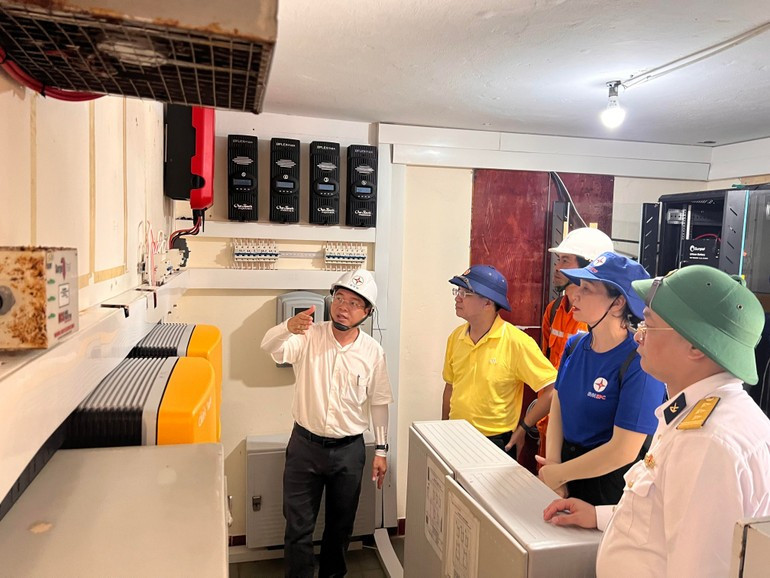
In 2024 alone, in cooperation with local authorities, the corporation saved over 2.2 billion kWh of electricity, equivalent to 2.4% of commercial electricity output, thereby reducing millions of tonnes of CO₂ emissions released into the atmosphere.
In particular, the Demand Response (DR) programme has encouraged enterprises to shift electricity use to off-peak hours, attracting nearly 5,000 major companies. This initiative has helped reduce peak capacity and stabilise the power grid.
According to the Department of Innovation, Green Transition and Industrial Promotion under the Ministry of Industry and Trade, since the enactment of the Law on Economical and Efficient Use of Energy in 2010, the Ministry has proactively improved the legal framework, issuing two decrees, 16 circulars, two technical regulations, and more than 50 sets of standards.
During this period, the Ministry also supported thousands of enterprises in upgrading technology, conducting energy audits, and implementing electricity-saving solutions, particularly in energy-intensive sectors such as cement, steel, and textiles.
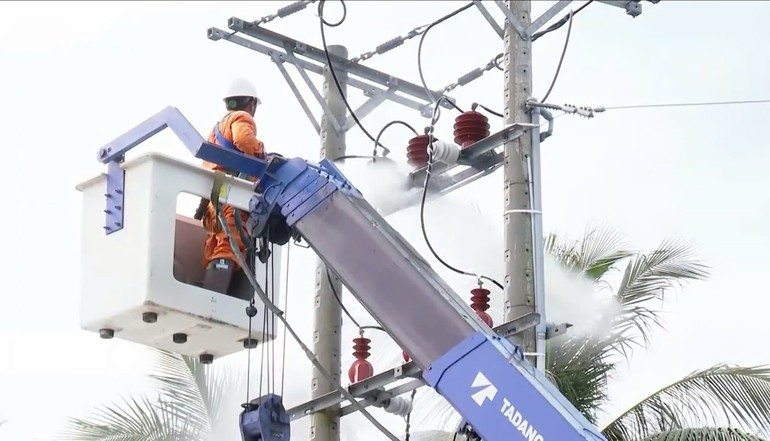
At the same time, efforts have been made to develop the market for high-performance equipment and to promote widespread energy labelling across product lines, thereby fostering a culture of green consumption in society.
Additionally, communication programmes and campaigns such as Earth Hour, Energy-Saving Families, and Energy Labelling for Appliances and Vehicles have been implemented annually and on a long-term basis, generating positive community impact.
Across the country, more than 9,500 households have installed rooftop solar power systems, 1,200 enterprises have conducted energy audits, and over 5,000 auditors and energy managers have been certified.
The energy labelling programme has achieved remarkable results: over 20,000 products have obtained high-performance labels, and 45 million incandescent bulbs have been phased out, saving about 100 million kWh of electricity annually, equivalent to the output of a 300 MW thermal power plant.

During the 2011–2015 and 2016–2020 periods, Viet Nam saved approximately 5.65% of total national energy consumption, contributing to a reduction of millions of tonnes of greenhouse gases. Since 2020, this target has been steadily maintained, with at least 2% of total commercial electricity output cut each year.
Do Thi Minh Tram, Deputy Director of the Department of Innovation, Green Transition and Industrial Promotion, stated: “In the context of Viet Nam’s drive for green growth and its commitment made at the 2021 United Nations Climate Change Conference (COP26), the development of renewable energy and the economical, efficient use of energy are both vital and urgent priorities.”
Changing mindset for breakthrough development
Resolution No. 55-NQ/TW, dated 11 February 2020, of the Politburo on the Strategic Orientation for Viet Nam’s National Energy Development to 2030, with a vision to 2045, along with the adjusted Power Development Plan VIII, sets a target that by 2030, Viet Nam will need around 150,000 MW of power generation capacity, nearly double the current level, to support an annual GDP growth rate of 8%.

However, between 2021 and 2024, energy supply faced numerous challenges due to natural disasters, climate change, soaring energy prices, and delays in infrastructure investment. Meanwhile, electricity demand continued to grow at an average of 8–10% per year, yet many factories still relied on outdated, energy-intensive technologies.
This reality highlights that saving and using energy efficiently is a crucial solution requiring the joint efforts and participation of both businesses and citizens.
Nguyen Dinh Hiep, Chairman of the Viet Nam Energy Conservation and Energy Efficiency Association (VECEA), noted that while many countries have successfully developed energy service company (ESCO) models — based on “benefit-sharing” mechanisms that encourage private-sector investment in energy-saving solutions — the legal framework and supportive policies in Viet Nam remain inconsistent, preventing a truly effective energy efficiency market from taking shape.

From this perspective, Hiep proposed establishing breakthrough financial mechanisms, preferential credit schemes, and dedicated support funds to encourage business investment.
The amended Law on Economical and Efficient Use of Energy, passed on June 18, 2025 and effective from January 1, 2026, introduces a significant innovation: the establishment of the Fund for Economical and Efficient Energy Use — an off-budget financial fund designed to support investment projects, mobilise social resources, expand the scope of energy labelling, strengthen local government responsibilities, and simplify administrative procedures.
To ensure these policies are implemented effectively, the Law aims to develop an efficient energy market centred on enterprises, promote public-private partnerships, and align national efforts with the goal of achieving net-zero greenhouse gas emissions by 2045.
Experts also believe that the National Assembly’s adoption of this Law marks a milestone in perfecting the legal framework, fostering green technologies, and improving electricity demand management.
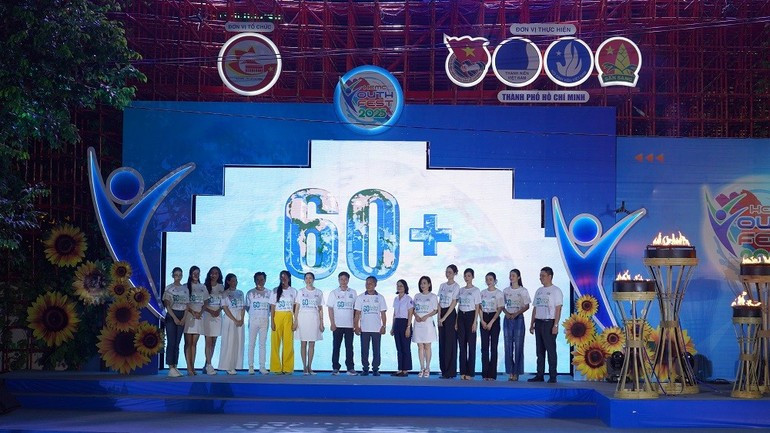
The Law has expanded the scope to cover construction, materials, and green buildings — aligning with the global trend toward sustainable urban development and greenhouse gas reduction.
This change reflects a transformation in mindset: from voluntary encouragement to institutional governance and accountability. It lays a foundation for Viet Nam’s transition toward a green, efficient, and low-emission energy economy.
The Ministry of Industry and Trade expects that, with the collaboration of ministries, sectors, enterprises, and the public, the movement to use energy economically and efficiently will spread nationwide, ensuring sustainable national energy security, fulfilling international commitments, and confidently leading Viet Nam into a new stage of green and prosperous development.
